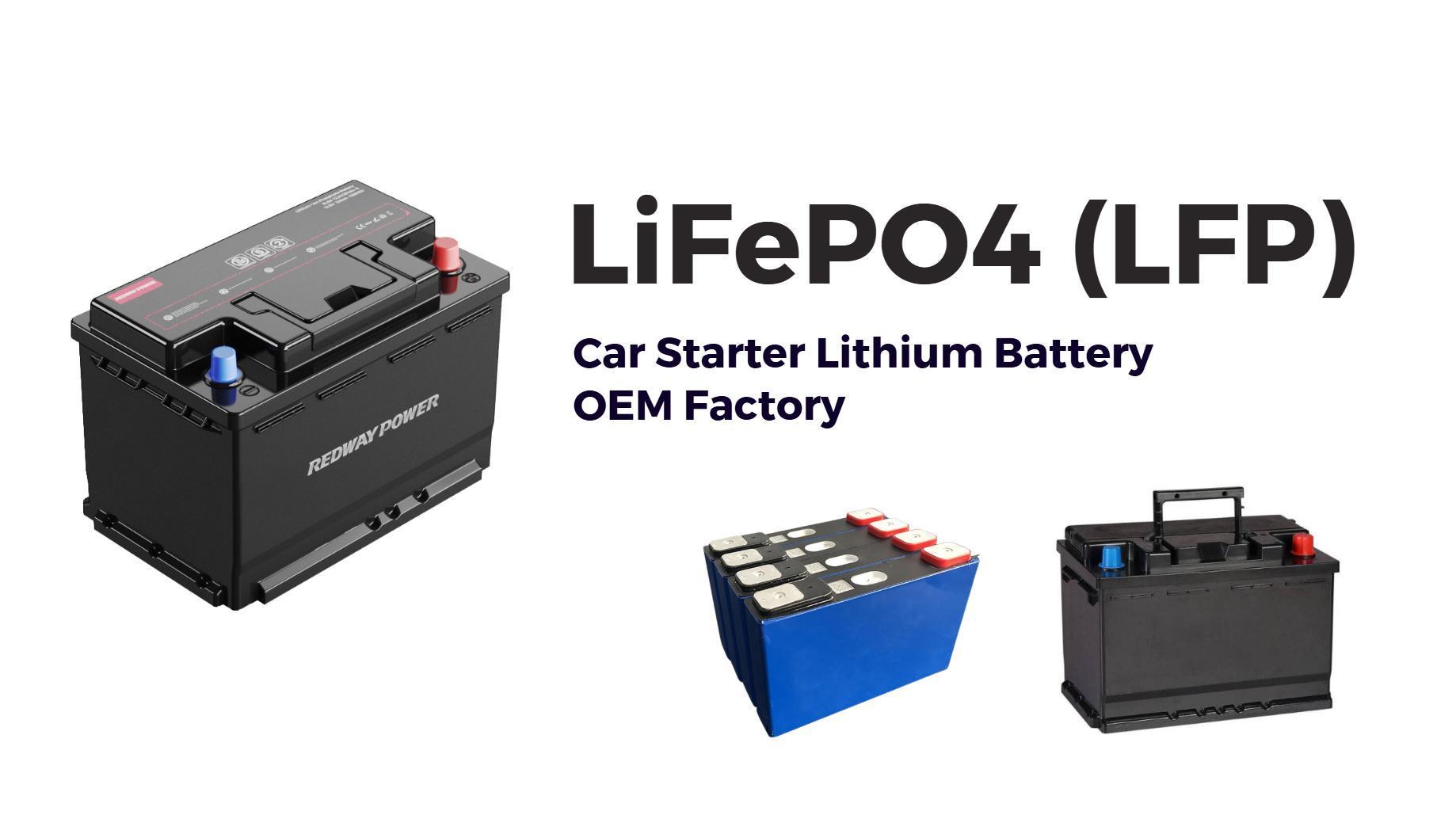
What Are the Benefits of LiFePO4 Car Starter Batteries?
LiFePO4 (Lithium Iron Phosphate) car starter batteries offer superior lifespan (4-10x longer than lead-acid), faster engine starts, lightweight design (50-70% lighter), and enhanced safety due to thermal stability. They perform reliably in extreme temperatures (-20°C to 60°C) and require zero maintenance. Though initially costlier, their long-term savings and eco-friendly chemistry make them ideal for modern vehicles.
How Do LiFePO4 Batteries Outperform Lead-Acid Alternatives?
LiFePO4 batteries deliver 3-5x higher power density, enabling faster cranking amps for quick engine starts. Unlike lead-acid batteries, they maintain consistent voltage during discharge, preventing power drops. They also recharge 3x faster and withstand 2000-5000 cycles versus 300-500 cycles in lead-acid, reducing replacement frequency.
Why Are LiFePO4 Batteries Safer for Automotive Use?
LiFePO4’s stable chemistry resists thermal runaway, explosions, and leaks. They operate safely under high vibrations and shocks, unlike volatile lithium-ion variants. Built-in Battery Management Systems (BMS) prevent overcharging, overheating, and deep discharges, ensuring compliance with automotive safety standards like SAE J537.
Advanced BMS technology continuously monitors individual cell voltages and temperatures, automatically disconnecting the battery during abnormal conditions. This multi-layer protection extends to crash scenarios, where the battery’s rigid casing and flame-retardant materials minimize fire risks. Unlike traditional batteries that emit hydrogen gas, LiFePO4 units remain sealed and leak-proof, making them suitable for confined engine compartments. Independent safety certifications from UL and IEC further validate their reliability for daily use in passenger vehicles and commercial fleets.
What Makes LiFePO4 Batteries More Cost-Effective Long-Term?
Despite higher upfront costs ($200-$600), LiFePO4 batteries last 8-15 years versus 2-4 years for lead-acid. Savings come from eliminating maintenance (no water refills), reduced replacement costs, and energy efficiency (95% vs. 80% efficiency). They also retain 80% capacity after 2000 cycles, minimizing performance degradation.
| Cost Factor | LiFePO4 | Lead-Acid |
|---|---|---|
| 10-Year Replacement Costs | $200-$600 | $800-$1,200 |
| Energy Loss per Cycle | 5% | 20% |
| Maintenance Hours/Year | 0 | 2-4 |
The table illustrates how LiFePO4’s lower energy loss reduces alternator strain, indirectly improving fuel efficiency by 1-3% in combustion engines. Fleet operators particularly benefit from reduced downtime – no need for weekly terminal cleanings or monthly specific gravity checks required with lead-acid systems.
Know more:
What are LiFePO4 car starter batteries and how do they work?
How do LiFePO4 car starter batteries compare to lead-acid?
Why are LiFePO4 car starter batteries more efficient than lead-acid?
What are the benefits of LiFePO4 car starter batteries?
How long do LiFePO4 car starter batteries last?
How do LiFePO4 car starter batteries improve vehicle reliability?
Can LiFePO4 Batteries Withstand Extreme Temperatures?
Yes. LiFePO4 batteries operate in -20°C to 60°C ranges without performance loss. Advanced electrolytes and BMS adjust charge rates in cold weather, while heat-resistant materials prevent swelling. Lead-acid batteries lose 30-50% capacity below 0°C, making LiFePO4 superior for Arctic or desert climates.
Are LiFePO4 Batteries Environmentally Friendly?
LiFePO4 uses non-toxic iron, phosphate, and graphite, avoiding lead and sulfuric acid. They’re 99% recyclable and reduce landfill waste via extended lifespan. Their energy-efficient production emits 25% less CO2 than lead-acid manufacturing, aligning with EU Battery Directive sustainability goals.
How to Maintain a LiFePO4 Car Starter Battery?
LiFePO4 requires no maintenance. Avoid deep discharges below 10% and store at 50% charge if unused. Use compatible lithium-specific chargers to prevent damage. BMS auto-balances cells, eliminating manual checks. Annual voltage tests are optional but recommended for longevity.
Which Vehicles Are Compatible With LiFePO4 Starter Batteries?
LiFePO4 works in gas/diesel cars, hybrids, trucks, and motorcycles. Ensure the battery matches OEM cranking amps (CCA) and group size. For EVs, verify voltage compatibility (12V/24V). Some vintage cars may need voltage regulators to handle lithium’s low internal resistance.
Expert Views
“LiFePO4 is revolutionizing automotive energy storage. Its cycle life and temperature resilience solve key pain points for electric and combustion vehicles alike. As charging infrastructure evolves, we’ll see these batteries dominate the OE market by 2030.” – Dr. Elena Marquez, Automotive Battery Engineer
Conclusion
LiFePO4 car starter batteries provide unmatched durability, safety, and efficiency. Their ability to thrive in harsh conditions and reduce lifetime costs positions them as the future of automotive power. Transitioning to LiFePO4 supports both performance demands and environmental sustainability.
News
1. Ultra-Fast Cold-Starting LiFePO4 Batteries for Arctic Conditions
New 2025 LiFePO4 starter batteries now deliver instant cranking power even at -40°C, outperforming traditional lead-acid batteries in extreme climates. These batteries use advanced nano-coated electrodes and electrolyte heating systems to ensure reliable starts in the harshest winter conditions.
2. Self-Diagnosing Smart Starter Batteries with Bluetooth
The latest LiFePO4 car batteries feature integrated Bluetooth connectivity and AI-powered diagnostics, alerting drivers to potential issues before failures occur. These 2025 models provide real-time health reports and predict remaining lifespan through smartphone apps.
3. 10-Year Warranty LiFePO4 Batteries for Commercial Fleets
Major manufacturers now offer decade-long warranties on heavy-duty LiFePO4 starter batteries, reflecting their improved durability. Designed for taxis, trucks and emergency vehicles, these 2025 batteries withstand 3x more charge cycles than previous generations while maintaining peak performance.
FAQs
- Do LiFePO4 batteries work in old cars?
- Yes, but ensure voltage compatibility. Some classic cars may require upgraded alternators.
- Can I jump-start a LiFePO4 battery?
- Yes, but use a lithium-compatible jumper. Avoid reverse polarity to prevent BMS damage.
- How to recycle LiFePO4 batteries?
- Return them to certified e-waste centers. Major retailers like AutoZone offer free recycling programs.
